| Discussion of
"restoration" work is a very slippery subject.
At the NMLRA Gunsmithing seminar John Bivins, Wallace
Gusler and I taught a three day class in "restoration"
for several years back in the 1980s. We stopped because
we felt it was a work best left to professionals, who
would follow the code of ethics, and not someone we had
in a short course. An amateur restorer could get in
trouble if it was determined that their actions were not
responsible.
This web site has a history of the evolution of the code
of ethics and also a set of guidelines for responsible
practices.
http://aic.stanford.edu/pubs/ethics.html
The basic rules can be summed up as; document what you
do and why, do nothing that harms the historical record
or artistic value (not just $$) of the object, use
reversible processes where ever possible, and respect
the object and the artisan who created it's original
intent.
Unfortunately, every collectors group seems to have it's
own interpretation of these codes. I once attended a
Carriage Association of America meeting and was told
about the "restoration" of a fine 18th-century carriage.
They explained that the body of the carriage was
originally made of oak, steamed and bent, then lined
with glued on linen for strength. They went on the
explain proudly that all that oak and linen had been
replaced by fiberglass panels!
In the firearms field we have examples of very different
practices depending on the type of gun. Lynton McKenzie,
world class engraver who taught at the NMLRA Seminar,
explained that in fine double guns it was common to
re-cut the engraving, so it would sparkle again, and
redo the color case hardening as a normal restoration
practice. Those who practiced that art made every effort
to make the "restoration" impossible to detect.
In the longrifle collectors world the trend for the last
10 or 15 years has been toward doing less and less.
Where re-conversion to flint was once the standard many
collectors now see the percussion use of a rifle as part
of its history that should be preserved. Not everyone
agrees yet but, following the belief that the present
owner is merely the temporary custodian, many of us have
come to view any "restoration," beyond what is needed to
prevent further damage/deterioration, as excessive.
Below are some before, during and
after photographs where damaged guns have been
stabilized.
(top) |
| Here is a
late percussion rifle that was shattered through the
wrist with several previous repair attempts. The cost of
this work probably exceeded the value of the rifle but
as a family piece the owner wanted it stabilized so he
could display it. This work was done in 1985, before the
decision by Colonial Williamsburg that the Gunsmith Shop
should not do restoration work.
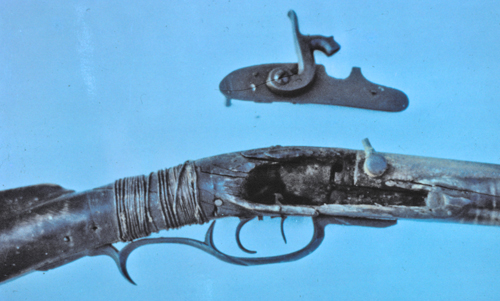

When we took the wire off the extent of the damage
was even more obvious.

It was also missing the patchbox lid and rear pipe.

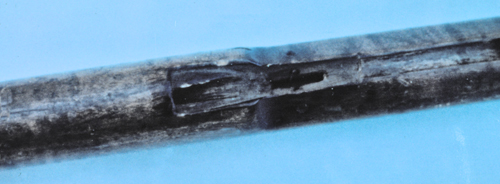
After:
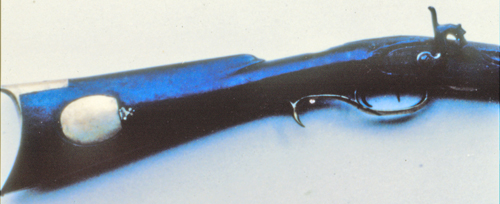
The new box lid was not engraved because there were no
known examples to base the engraving on.
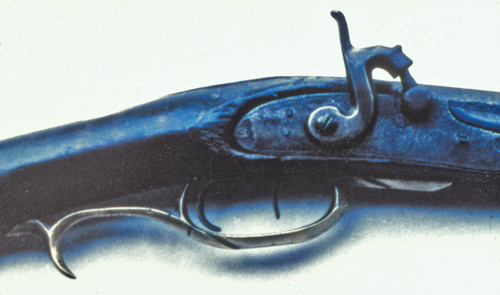
The top line of the wrist was not corrected because that
would have required the addition of too much new wood.
(top)
This Virginia rifle was in good shape except for the
iron band that had been applied to support the broken
wrist. Although, in the 1980s, we removed the band and
stabilized the wrist with modern glue I believe that the
same rifle, if discovered today, should be left alone.
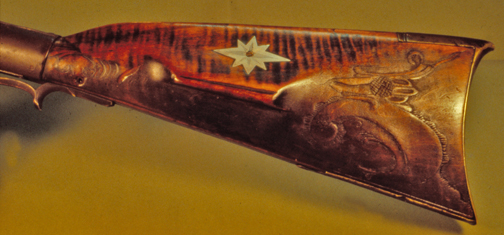

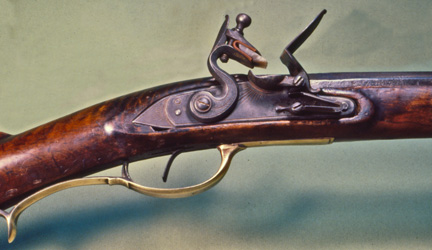
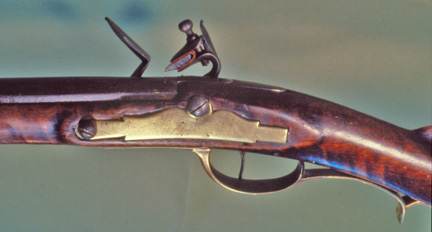
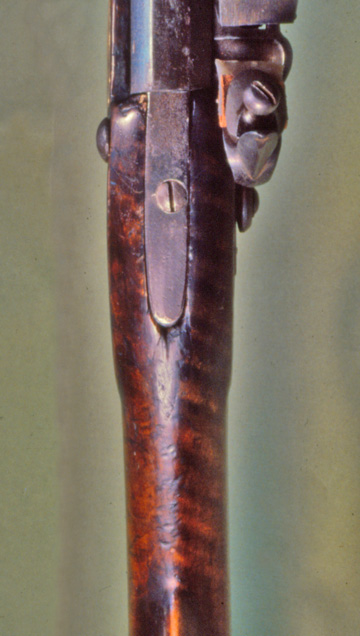
More to come...as time permits.
(Top) |